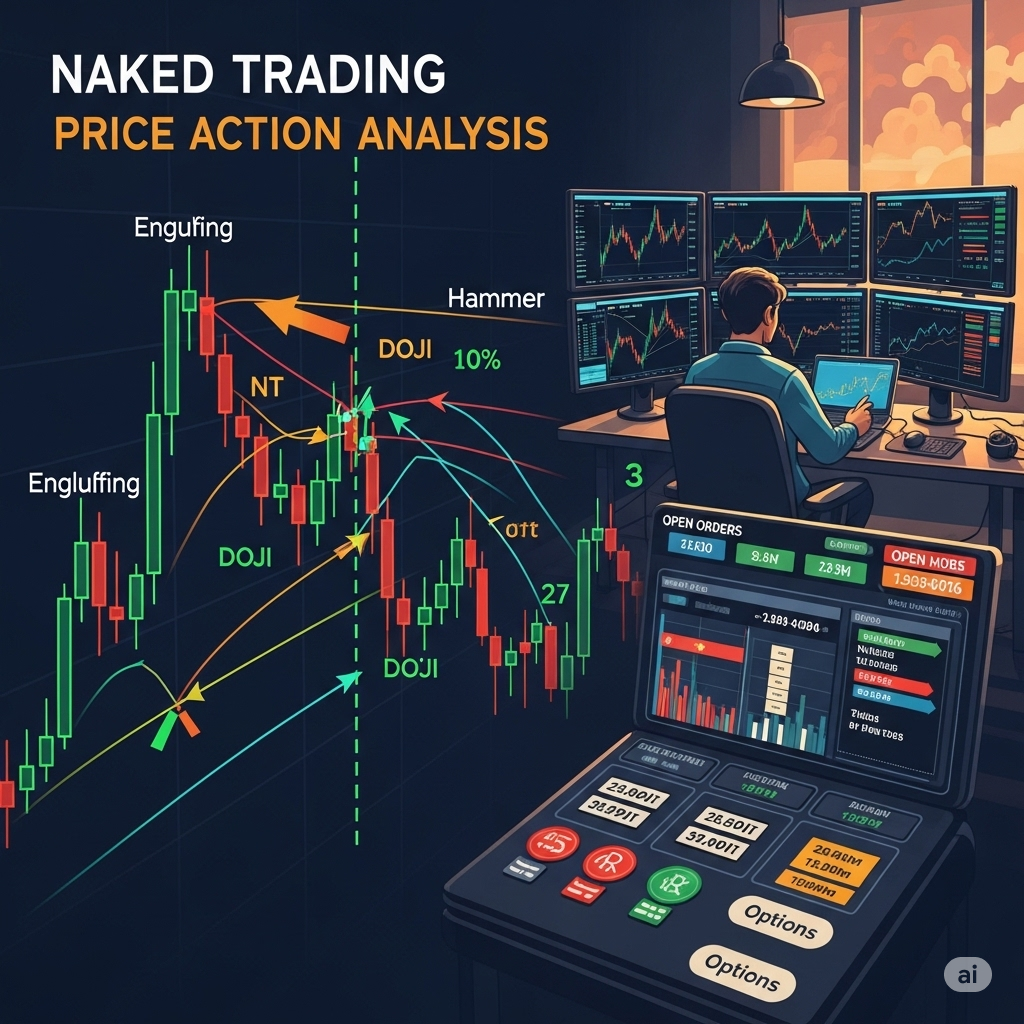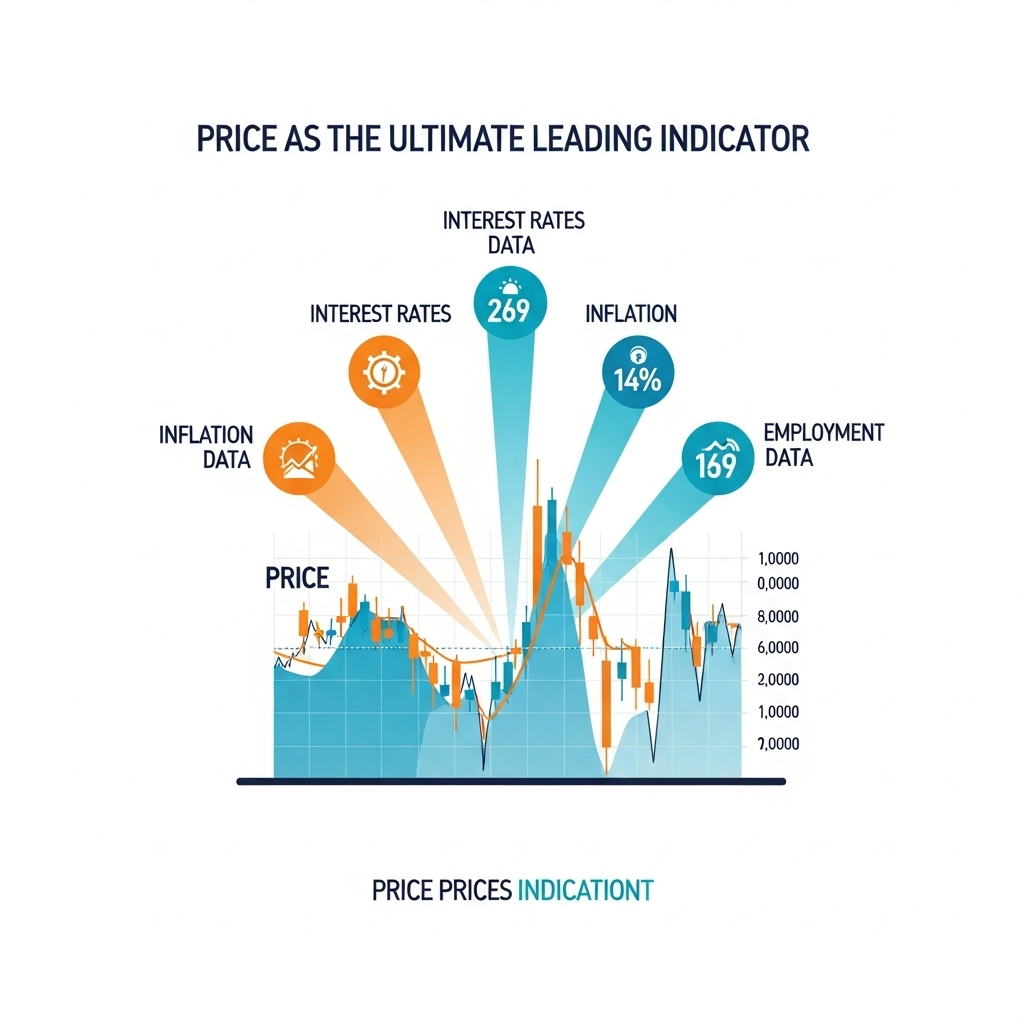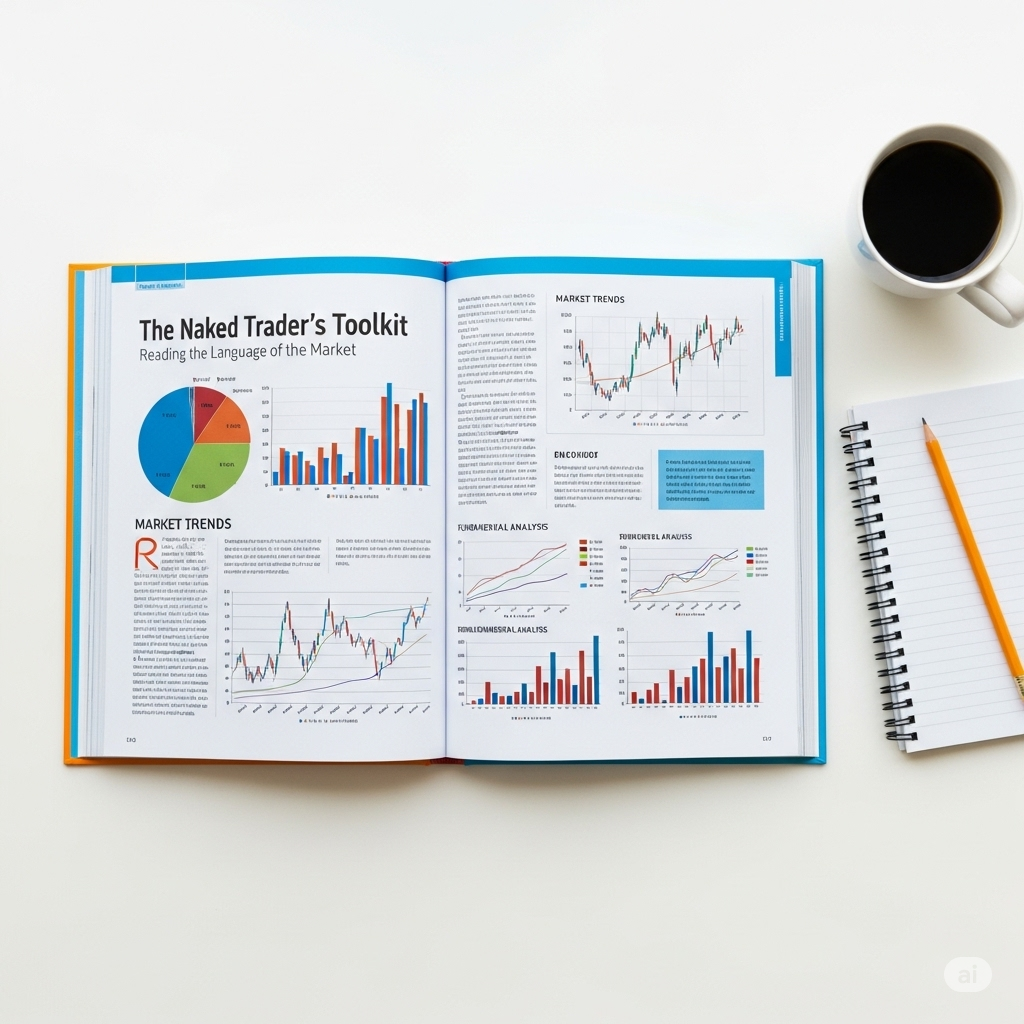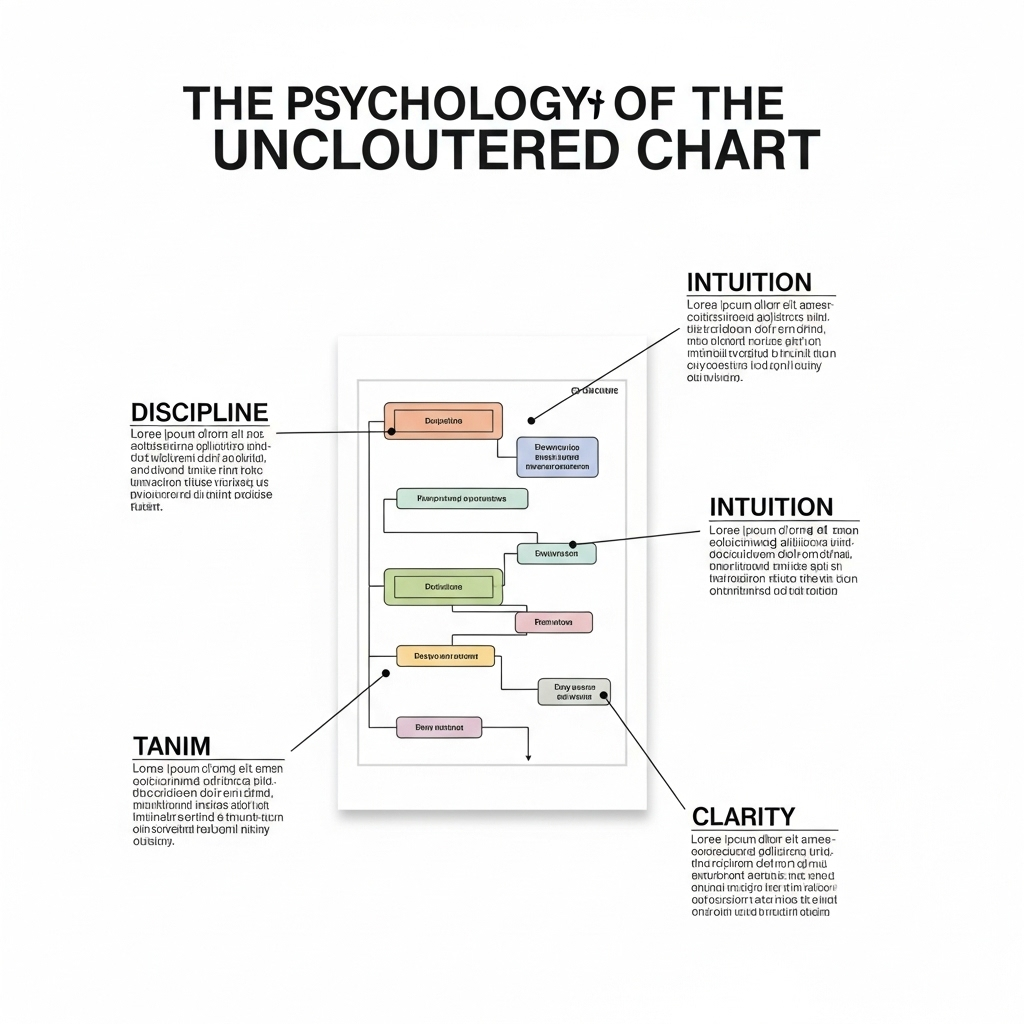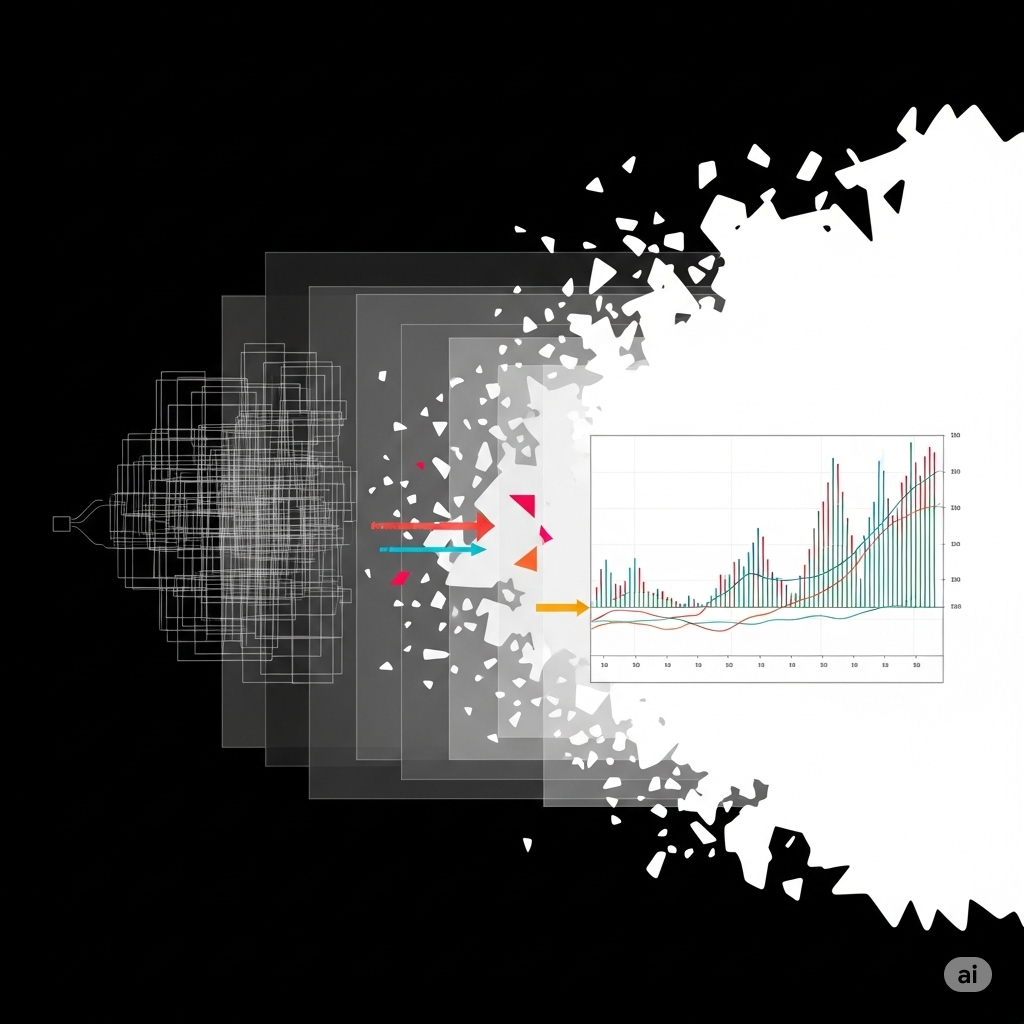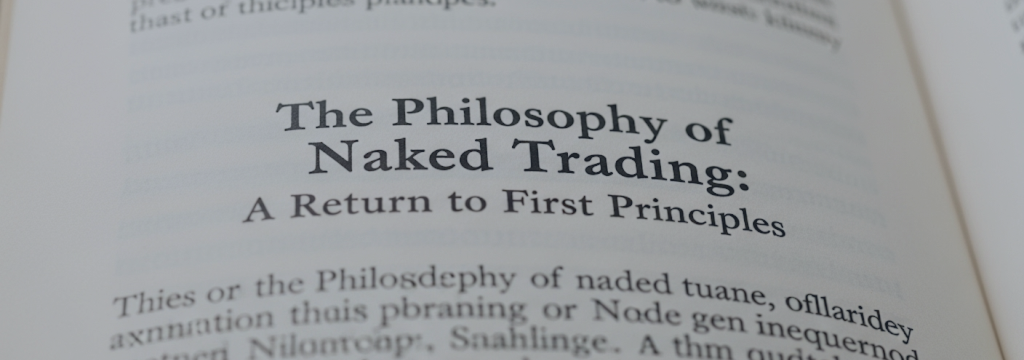
Ditch Indicators, Trade Naked: An Expert Report on Price Action Trading
The Philosophy of Naked Trading: A Return to First Principles
In the complex world of financial markets, a methodology champions simplicity: naked trading. Also known as price action trading, this approach is a return to the foundational principles of market analysis. It is a philosophy built on the belief that the most reliable source of information is the price itself.
Defining "Naked Trading" and "Price Action Analysis"
At its core, naked trading involves making all trading decisions from a "clean" price chart—one stripped of conventional technical indicators like RSI or MACD. Instead of relying on mathematical formulas, the naked trader analyzes the raw movement of price over time.
The fundamental tenet is that all variables influencing a market—economic reports, geopolitical events, and corporate earnings—are already reflected and discounted in the price action. Therefore, price is considered the ultimate leading indicator, offering the most direct and unfiltered view of the market's real-time dynamics. This approach forces the trader to move from relying on external, formulaic tools to developing internal, interpretive skill.
Crucial Distinction: Naked chart trading should not be confused with the significantly riskier strategy of "naked options trading," which involves selling options without an offsetting position and carries the risk of potentially unlimited losses. This article focuses exclusively on the analysis of naked price charts.
The Case Against Indicators: Deconstructing the Lag and Clutter
The movement toward naked trading is a reaction to the perceived shortcomings of conventional indicators.
-
The Inherent Lag: The primary criticism against most indicators is that they are lagging. They are mathematical calculations based on historical price data, meaning they process what has already happened. Price action, in contrast, is a leading indicator because it reflects the market's state in real-time. This lag can result in missed opportunities or entries at less favorable prices.
-
Obscuring the Narrative: A second major argument is chart clutter. "Indicator overload" can create visual chaos, leading to cognitive overload and "analysis paralysis." Conflicting signals from different indicators create confusion and hesitation, preventing decisive action.
-
The Fallacy of Universality: Many indicator-based strategies are optimized for specific market conditions (e.g., trending or ranging). They often fail when the market regime changes. Price action analysis is more robust and adaptable because it focuses on interpreting the market's current behavior.
Ultimately, indicators can become a psychological crutch, fostering a reliance on tools rather than the development of true interpretive skill.
The Naked Trader's Toolkit: Reading the Language of the Market
Naked traders employ a refined toolkit focused on interpreting the "language" of the market directly from the price chart. High-probability trading arises from confluence, where multiple elements align to support a single trading idea.
-
Foundations: Support and Resistance Levels The bedrock of all price action analysis. These are horizontal price zones where the balance of supply and demand has previously shifted.
-
Support: A price zone where buying interest ("demand") acts as a market "floor."
-
Resistance: A price zone where selling interest ("supply") acts as a market "ceiling."
-
-
Narrative: Market Structure (Trends & Ranges) Market structure provides the essential context by defining the market's current directional bias.
-
Uptrend: A sequence of higher highs (HH) and higher lows (HL).
-
Downtrend: A sequence of lower highs (LH) and lower lows (LL).
-
Range (Consolidation): Price moves sideways between support and resistance, indicating equilibrium.
-
-
Grammar: High-Probability Candlestick Patterns Candlesticks provide visual insight into the battle between buyers and sellers. Most traders focus on a few key reversal and continuation patterns.
-
Pin Bar (Hammer/Shooting Star): A candle with a long wick and small body, signifying a sharp rejection of a price level.
-
Engulfing Pattern: A powerful two-candle pattern where one candle's body completely "engulfs" the prior one, signaling a strong shift in momentum.
-
Inside Bar: A candle whose entire range is contained within the prior bar, representing a pause that often precedes a breakout.
-
-
Visualization: Trend Lines and Channels Simple drawing tools used to visualize the flow of a trend. Trend lines connect major swing points to act as dynamic support or resistance.
-
Confirmation: The Role of Volume Volume measures the conviction behind a move. High volume can confirm a breakout, while low volume can signal a false breakout. A massive volume spike can often mark a market climax or turning point.
Masters of Price Action: A Spectrum of Strategies and Success Stories
"Naked trading" is a flexible philosophy. An examination of prominent traders reveals a spectrum of methodologies where price is the primary, though not always sole, analytical tool.
| Trader | Core Philosophy | Primary Timeframe | Key Tools/Patterns | Use of Indicators | Key Success |
| Paul Tudor Jones | Extreme risk control, asymmetric reward/risk (5:1). | Macro (Weekly/Monthly) | Historical chart patterns, market structure. | Uses 200-day MA as a macro trend filter. | Anticipated 1987 crash, earning an estimated $100 million. |
| Nicolas Darvas | Mechanical momentum system, disciplined loss cutting. | Intermediate (Daily/Weekly) | Darvas Box (price/volume consolidation), breakouts. | None. Relied on price and volume exclusively. | Turned $10,000 into over $2 million in 18 months. |
| Nial Fuller | Trend/Level/Signal (T.L.S.) minimalist approach. | Higher (Daily/Weekly) | Pin Bar, Inside Bar, Fakey pattern at confluent points. | Minimal; may use EMAs for dynamic context. | Won 2016 Million Dollar Trader Competition (369% return). |
| Al Brooks | Every bar is information; markets are in trend or range. | Lower (Primarily 5-min) | Micro-patterns, bar-by-bar analysis, pullbacks. | None. Purely discretionary analysis of raw price bars. | Authored an encyclopedic series on price action. |
| Robbie Burns | Simplified blend of fundamentals with technicals. | Mid- to Long-Term | Price momentum, Level 2 data, ruthless stop-loss. | Not a purist; combines PA with fundamental analysis. | Best-selling author and successful private UK investor. |
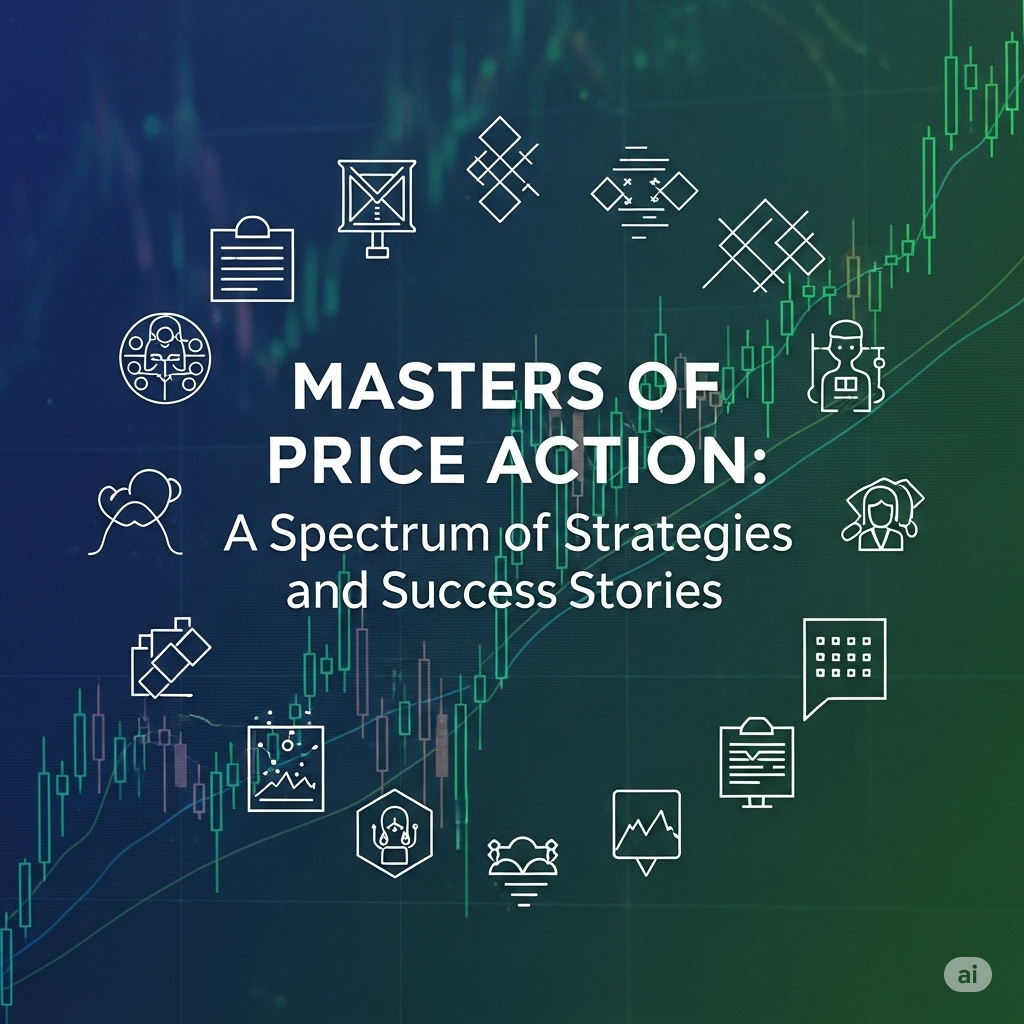
A Tale of Two Traders: A Comparative Analysis of Decision-Making
To crystallize the difference, consider a scenario: The EUR/USD is in an uptrend and pulls back to a key support level.
| Trading Process Stage | The Naked Trader | The Indicator Trader |
| Market Scan | Identifies market structure (HH/HL) and key horizontal levels on a clean chart. | Confirms trend with moving averages (e.g., price > 50 SMA > 200 SMA). |
| Setup Identification | Views pullback to support as a high-probability buying opportunity. | Waits for indicators to signal a turning point. |
| Entry Trigger | A discretionary signal based on a candlestick pattern (e.g., Bullish Pin Bar) at support. | A mechanical signal from a confluence of indicators (e.g., RSI crossover, MACD cross). |
| Risk Management | Stop-loss placed logically based on the price action signal (e.g., below the pin bar's low). | Stop-loss may be based on an indicator level (e.g., below a moving average). |
| Psychological State | Relies on judgment, bears full responsibility. Leads to empowerment and intuition. | Relies on objective rules. May feel secure but experience frustration with signal lag. |
The Psychology of the Uncluttered Chart: Discipline and Intuition
Adopting a naked trading approach is a psychological transformation. By removing indicators, a trader confronts the market—and themselves—more directly. This enhances mental clarity and focus, but also exposes the trader to their own emotional biases. The inherent subjectivity requires unwavering discipline and self-awareness.
| Cognitive Bias | Typical Manifestation in Naked Trading | Practical Mitigation Exercise |
| FOMO (Fear of Missing Out) | Chasing a breakout candle that has already moved significantly. | Implement a strict rule: "No trade without a valid setup from my checklist." |
| Confirmation Bias | Seeing a "pin bar" where there isn't one because you want the market to reverse. | Play "devil's advocate": Actively search for and write down reasons the trade might fail. |
| Loss Aversion | Widening a stop-loss on a losing trade, turning a small loss into a large one. | Use hard stop-loss orders placed immediately upon entry. Define risk before the trade. |
| Overconfidence | Increasing position size beyond the plan after a few wins. | Adhere to a fixed risk and position sizing model for every single trade. |
| Herding Behavior | Abandoning your analysis because of strong opinions seen on social media. | Develop and trust a mechanical entry checklist based on your trading plan. |
A key application of this psychology is trading false breakouts. Amateurs jump in on the initial move, providing liquidity for professionals to take the other side. The savvy price action trader learns to recognize the signs of failure and uses the subsequent reversal as a high-probability contrarian opportunity.
The Price Action Canon: A Curated Guide to Further Learning
Mastering price action is a journey of continuous study.
-
Foundational Texts:
-
Japanese Candlestick Charting Techniques by Steve Nison: The essential guide that introduced candlestick analysis to the West.
-
Trading in the Zone by Mark Douglas: Widely considered the bible of trading psychology.
-
Market Wizards by Jack D. Schwager: Compelling interviews revealing the mindsets of the world's best traders.
-
-
Advanced Strategy:
-
Trading Price Action Series by Al Brooks: The encyclopedia of price action for dedicated students.
-
Price Action Breakdown by Laurentiu Damir: A clear, simple, and effective approach, excellent for beginners.
-
A Complete Guide to Volume Price Analysis by Anna Coulling: The definitive guide to integrating volume with price.
-
-
Structuring a Self-Study Program:
-
Foundational Knowledge: Learn the language of candlesticks and a basic strategy framework.
-
Psychological Grounding: Read Trading in the Zone before risking capital.
-
Chart Practice: Practice identifying key levels and patterns on historical charts.
-
Deep Dive & Specialization: Choose a methodology that resonates with your personality and study it deeply.
-
Demo Trading & Journaling: Practice disciplined execution and maintain a detailed journal.
-
Live Trading (Micro Size): Transition to a live account with minimal risk to train your emotional resilience.
-
Conclusion
Naked trading is a philosophy rooted in the belief that price movement is the purest reflection of all market dynamics. By stripping away lagging indicators, the trader aims for greater clarity, focus, and a more intuitive connection to the market.
This path is not without challenges. It demands the trader forge unwavering discipline and emotional control. Success is less about finding a secret pattern and more about building an "internal algorithm" through experience and self-awareness. For those willing to undertake this journey, the reward is not just a trading strategy, but a deep and lasting market literacy that is both adaptable and robust.
